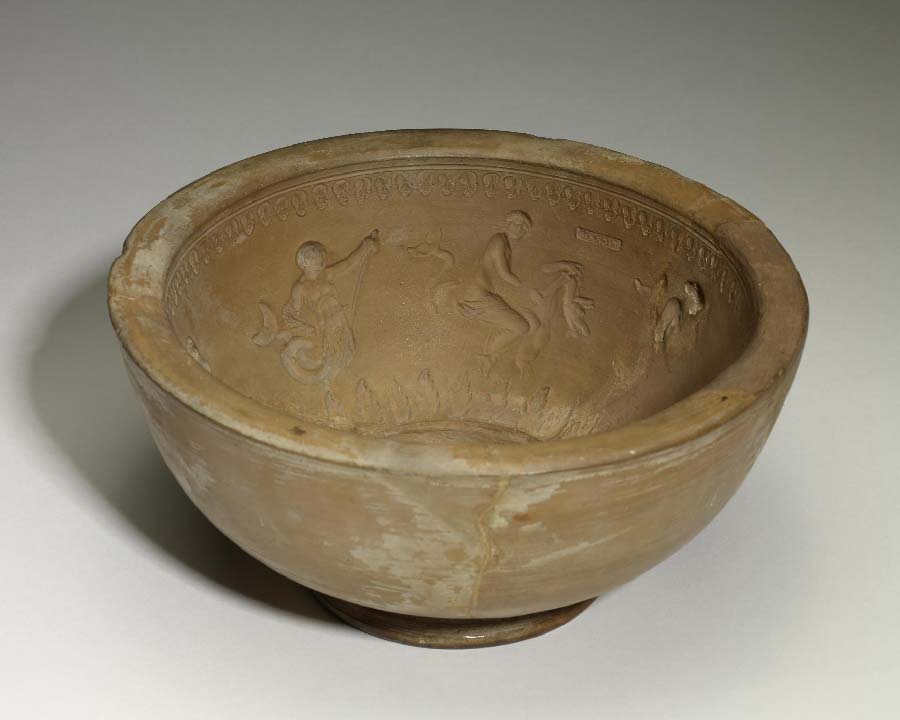The Roman House at Hopkins | Everyday Dining: Terra Sigillata
Introduction
By Laura Garofalo

The high-gloss, red-slip ceramic vessels featured here would have been used for daily eating and drinking throughout the Roman Empire. This type of ceramic ware is referred to as terra sigillata, or “stamped clay,” as many pieces were mold-made (See the image below for an example of a terra sigillata mold at the Walters Art Museum, Baltimore). Vessels like these were generally mass-produced in set shapes and designs, from the ornately detailed (42.63) to simpler, unadorned vessels (291).
Due to the mass-production and export of terra sigillata, individuals throughout the Roman Empire would have used similar vessels, produced at one of several important manufacturing sites in central Italy (1122, 1125, and 291), France (297), and later, in North Africa. The concurrent variation and standardization of designs and potters’ stamps allow terra sigillata fragments to be closely dated, providing useful information about the ancient economy and trade throughout the ancient Mediterranean. Fragments of terra sigillata have been found in many different areas of the Roman Empire, ranging from Britain to the Black Sea.
In this exhibition, three figural fragments (297, HT 485, 42.63) display the type of stamped mythological scenes which adorned many terra sigillata vessels. On one piece (297), the hunter Actaeon is attacked by his own hounds as punishment for happening upon the nude goddess Diana bathing in the woods. A fragment of a bowl (HT 485) presents a popular scene of a putto, or cupid, racing in a chariot. Three triangular posts flanking both sides of the chariot set the scene as a circus race. Finally, an ornately detailed fragment (42.63) features a horned satyr wearing a goat-skin. Satyrs were mythical creatures often associated with Dionysus, the god of wine.
Several fragmentary bases of vessels (1120, 1122, 1125, 1123) and a more complete plate (291) display stamps from potters’ workshops, ranging from workshop masters’ names (291) to a small stamp depicting a goddess, perhaps Ceres (1121). Two of these fragments were said to have been found together (1122 and 1125) and share both a potter’s stamp and similar graffiti. Other graffiti (1120, 1123) suggest owners’ names or household markers, as on 1120, incised with “FLORV,” perhaps short for the name “Florus.” The black numbers painted on several of the fragments are modern accession numbers, which echo the inscribed ancient graffiti.
Each of these fragments highlights the ubiquity and utility of terra sigillata vessels in the Roman Empire while also, as in the case of the fragments with graffiti, demonstrating the highly personal uses of such vessels by individuals.
